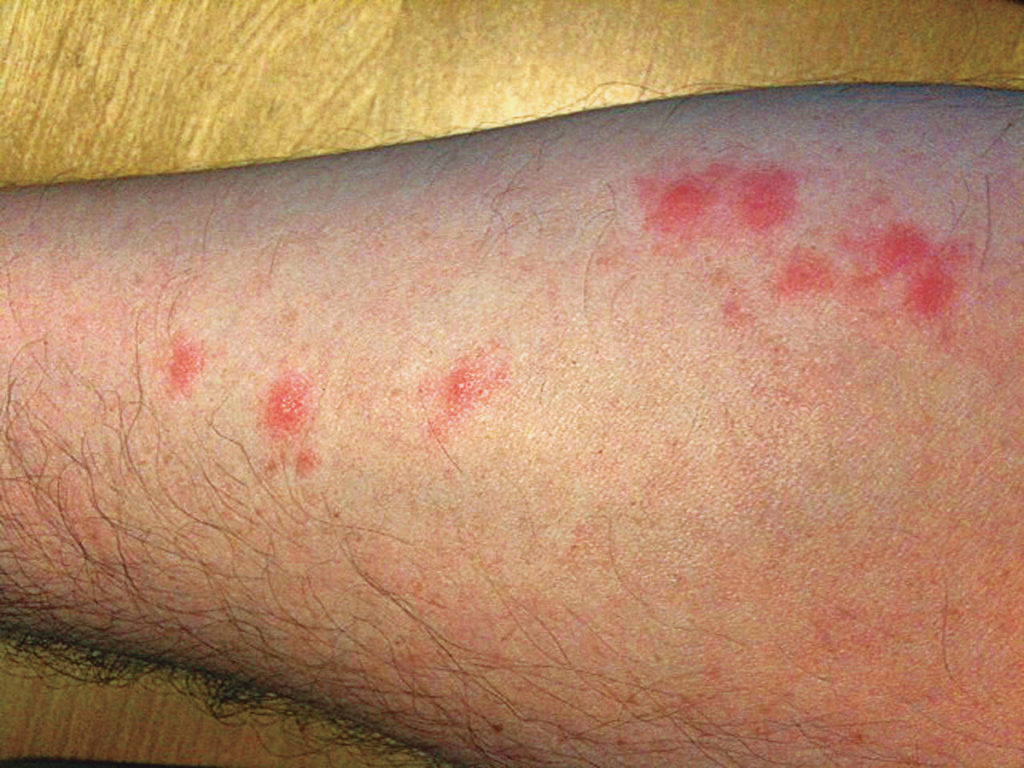BED BUG BITES

What is a bed bug bite?
Bed bug bites are exactly as they sound, they occur during nocturnal feedings that produce a linear or grouped cluster of small bumps (papules) and urticaria on affected skin. Urticaria is a localized, well-defined, superficial skin inflammation, also known as hives. Bed bugs are part of the Hemiptera insect species. This species has piercing-sucking mouthparts that attach to the skin and feed on human blood. Biting the skin induces an inflammatory immune response leading to swelling and inflammation.
Susceptibility to beg bugs depends on many external factors such as socioeconomic status, cohabitation with domestic animals, housing conditions, climate and clothing. In addition, bed bugs are attracted to body heat, exhaled air, vibration, human sweat and odor. Generally, bed bugs live between wooden floorboards, in furniture, bed frames, mattresses or behind peeling pain. They sneak out of these locations, attach to skin and feed for 3-12 minutes. In proper conditions these bugs can survive without a meal for a year or longer. The females lay eggs and these hatch in about a week.
How are bed bug bites treated and prevented?
Bed bug bites do not usually require any treatment, but this can vary based on the clinical picture. Prevention of a secondary bacterial infection is important with application of antiseptics or antibiotic creams. Creams with corticosteroids can help reduce inflammation.
References:
Wolff K, Johnson, RA. Fitzpatrick’s Color Atlas and Synopsis of Clinical Dermatology. Sixth Edition. 2009.


